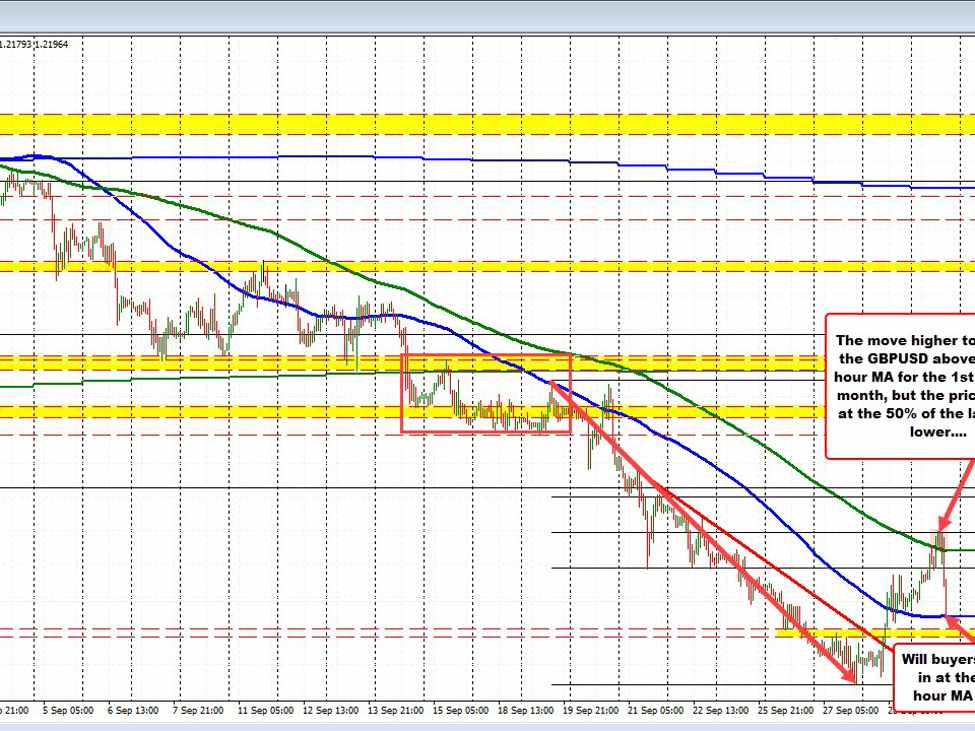The GBPUSD moved above its 100-hour moving average yesterday after trending lower for the 1st half of the trading week. The move back above the 100-hour moving average give the buyers the go-ahead to push higher toward the 200-hour moving average. In trading today after testing that moving average on the first test in the London morning session, the price was able to break above it and tilt the bias higher (see the green line in the chart below).
The significance of that break?
Looking at the hourly chart below, the break above the 200-hour moving average was the 1st since September 1. The price should’ve gone higher but stalled against the 50% midpoint of the last move to the downside at 1.22673.
The last few hours have seen a sharp move back to the downside. The current hourly bar moved down to test its 100-hour moving average of 1.21805. Support buyers leaned against the level. The current price is back above the 1.2200 level.
What next as we head into the close and into the new trading week ahead?
With support holding against the 100-hour moving average, and the break above the 200-hour moving average failing, the price is in a neutral area at least in the short term between those two moving averages. If the sellers are to take control, they need to move below the 100 hour moving average at 1.21805.
Conversely, if the buyers are to take more control, they need to break and stay above the 200-hour moving average of 1.2248.
Those two levels will dictate the next move for this currency pair not only today but going into next week. Until then, the short/medium-term bias is more neutral as traders await the next shove.
GBPUSD trade between the 100 and 200 hour moving averages
